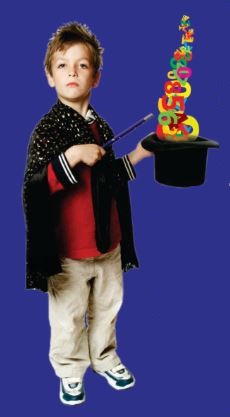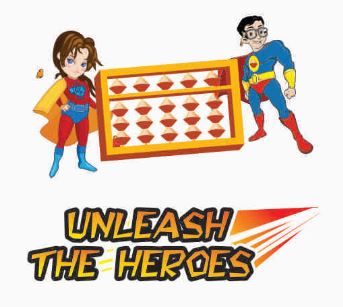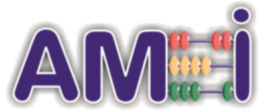What is Abacus?
Abacus is a centuries old rectangular wooden instrument used to do calculations based on the decimal system. Abacus (also called Soroban in Japan) is considered to be the first calculator in Japan and has played a significant role in the educational development of the country. It was used in ancient times for calculating numbers through basic arithmetic system. Abacus is considered to be the first calc ulator developed by humans. It has vertical rods with sliding beads and a fixed bar across the rods. The standard Abacus used at AMI today has 17 rods with 5 beads each, 1 above the bar and 4 below.
ulator developed by humans. It has vertical rods with sliding beads and a fixed bar across the rods. The standard Abacus used at AMI today has 17 rods with 5 beads each, 1 above the bar and 4 below.
Complete Brain Development Program
The human brain is basically divided into two parts left the brain and right brain. The left brain is also referred to as the digital brain. It controls reading and writing, calculation, and logical thinking. The right brain is referred to as the analog brain. It controls three dimensional sense, creativity, and artistic senses. These two work together to allow us to function as humans. In the abacus method of mental calculation, the learners manipulate abacus beads in their head to carry out a calculation. This improves the coordination between left and right brain. Recent studies have proven that the abacus method of mental calculation is extremely effective in activating the right brain. Researchers consider the completion of abacus learning as the mastery of the mental calculation. Learning to use the abacus can help develop this right brain/left brain coordination. One of the well-known activity in Abacus learning is brain exercise which is done in such a way that it stimulates both parts of brain i.e right and left simultaneously and therefore can be a very powerful tool for enhancing mental abilities.
Visualization of Mathematics
Math has an reputation of being a difficult subject. It is often seen as complex and hard to grasp, a subject to be endured rather than to be enjoyed. We understand that a child loves to play and learns better if taught in a playful manner. At Abacus math institute we introduce students to brain games our Abacus training for children is planned to make math operations easy and enjoyable. First we grow child’s interest in numbers and then we use math operations using abacus tool to enhance mental abilities of child. The number playful activity makes them feel ‘Maths in cool’.
What are the benefits of Abacus ?
Recent studies have shown that the abacus method of mental calculation is effective in the development of the right brain. At first, this idea was only a hypothesis, but the recent development of high-tech machinery has helped provide tangible research data. The child shows remarkable improvement in all the subjects including mathematics. The concept of thinking in pictures leads to better understanding and enhanced memory, which is basic for all academic studies.
-
Improves Concentration
Numerical relations in a clear and logical way for children. The abacus mental picture training will elevate memory power and improve concentration of a child. The speed training enables the child to respond to questions promptly. In addition, the speed hearing training encourages the child to dedicate full attention to study by listening more attentively and effectively.
- Intuitive
Unlike using a pen and paper to add or multiply, the abacus provides an intuitive understanding of the size of the number-something which child do not learn at school.
-
I love Math
Learning the methods of Abacus enables children to solve their questions faster with accuracy which brings repeated success. This success ripples into interest for math. The fear of numbers goes away and math becomes a fun filled exercise for children.
-
Strengthened Visual Memory
Abacus users simply visualize an image of abacus in their head. They do not replace the image into words. The im portant aspect is the ability to visualize can be used for other subjects. Performing mental arithmetic by the process of visualization abacus in the mind stimulates visual memory and its repeated practice allows the brain to think, plan, envision and interpret thought spatially. Students learn to think in pictures.
portant aspect is the ability to visualize can be used for other subjects. Performing mental arithmetic by the process of visualization abacus in the mind stimulates visual memory and its repeated practice allows the brain to think, plan, envision and interpret thought spatially. Students learn to think in pictures.
-
Enhances Academic Performance
Continuous practice with increased difficulty levels by way of more numbers per questions and time target to solve set of questions results in improved focus and concentration. This translate into exceptional academic performance at school.
